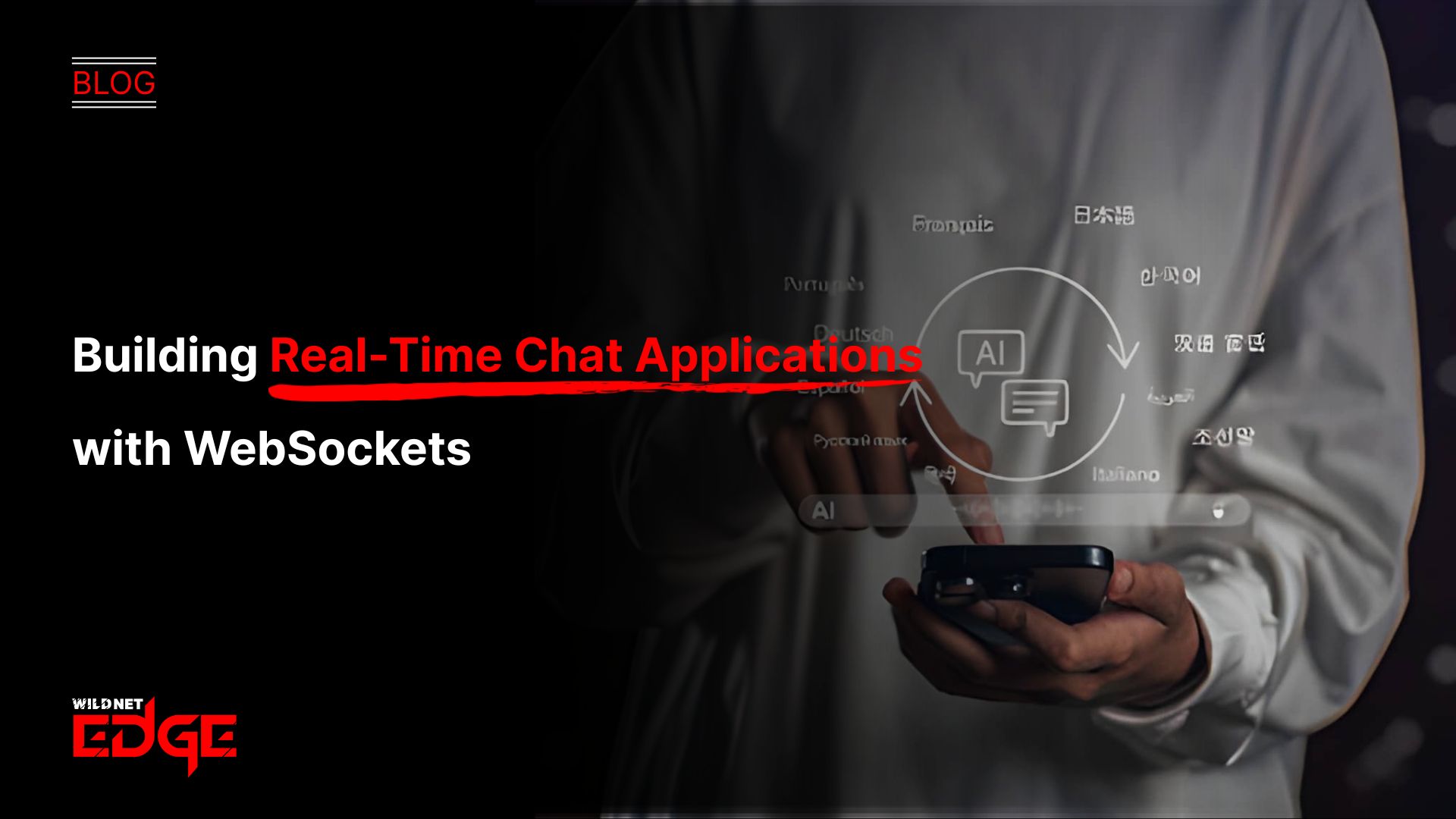Ever tried building a chat app only to find messages lagging or users dropping off due to slow updates? If you want real-time web apps that deliver instant messaging UX without a hitch, you’re in the right place. I’ll show you how to leverage WebSockets to create scalable chat infrastructure that keeps your users engaged and conversations flowing seamlessly.
Real-time communication is no longer a luxury—it’s a user expectation. Whether you’re building a customer support tool, a social platform, or a collaboration app, your chat system must feel instantaneous. The key lies in crafting real-time web apps backed by a robust, scalable backend that handles the load as your user base grows.
Instant Messaging UX: Foundations of Real-Time Interaction
Delivering an instant messaging UX that excites and retains users requires more than just sending and receiving messages. It’s about crafting a seamless, reliable experience where every message feels immediate and meaningful.
Importance of Low Latency and Instantaneous Updates
Latency can make or break the chat experience. Users expect messages to appear within milliseconds, without frustrating delays. Studies show that delays beyond 100ms are perceptible, and anything approaching a second leads to frustration.
To minimize latency:
- Use WebSockets for persistent connections instead of polling or long-polling.
- Optimize data transmission by sending only necessary payloads (e.g., message text and metadata).
- Minimize server-side processing per message.
- Implement client-side buffering with immediate UI updates, even if server confirmation is pending.
Role of UI Design in Enhancing Chat Experience
UX doesn’t stop at speed. The chat UI must be intuitive and responsive, enabling users to feel comfortable and engaged:
- Typing indicators to show when someone is composing a message.
- Message read receipts to confirm that messages have been seen.
- Smooth animations for new messages and status changes.
- Flexible input fields that accommodate emojis, attachments, and editing.
Designing for accessibility—such as supporting screen readers and high contrast modes—also widens usability.
Handling Message Synchronization and Delivery Confirmation
Real-time apps must balance immediacy with certainty. To handle message synchronization:
- Use acknowledgments (ACKs) to confirm that messages are received and stored on the server.
- Implement retry mechanisms for failed message sends.
- Sync message histories upon reconnect or app reload to avoid message gaps.
- Address out-of-order messages with timestamps and sequence IDs.
By combining these techniques, you’ll ensure a chat experience that’s both smooth and trustworthy.
Scalable Chat Infrastructure: Building for Growth and Performance
Real-time web apps need backend infrastructure that scales effortlessly as users increase from hundreds to millions.
Choosing the Right Architecture for Scalability
Modern chat apps benefit from microservices or serverless architectures:
- Microservices breakup responsibilities into manageable, independently deployable units (e.g., message broker, presence service, user session manager).
- Serverless platforms like AWS Lambda or Azure Functions automatically scale with traffic but require event-driven design.
Combining both can offer the flexibility and automatic resource management needed for unpredictable chat loads.
Leveraging WebSockets for Persistent Bi-Directional Communication
Unlike traditional HTTP, WebSockets create a persistent, full-duplex connection between client and server. This enables:
- Instant data transfer without repeated HTTP headers.
- Real-time push notifications from server to client.
- Efficient use of network resources.
A scalable chat infra handles multiple WebSocket connections distributed across servers without disrupting user sessions.
Managing User Sessions and Message Routing Efficiently
Session management in chat apps involves:
- Tracking active users and their connection IDs.
- Efficiently routing messages between sender and recipient(s).
- Handling multi-device and multi-instance presence.
Partitioning users by chat rooms, topic, or load balancing helps route messages effectively.
Load Balancing and Horizontal Scaling Considerations
To scale chat apps horizontally:
- Deploy multiple WebSocket servers behind a load balancer.
- Implement sticky sessions or use a shared state system (Redis, Kafka) to keep track of client connections.
- Employ cluster-wide message brokers to distribute events.
- Monitor server health and auto-scale based on usage metrics.
This approach ensures your app remains fast and reliable as your user base grows.
WebSockets: The Backbone of Real-Time Web Apps
WebSockets transform chat apps by enabling true real-time data exchange, outpacing traditional HTTP communication.
How WebSockets Enable True Real-Time Data Exchange
Unlike HTTP’s request-response model that initiates a connection for each transaction, WebSockets maintain an open channel, allowing servers to push messages instantly to clients. This persistent connection slashes overhead and latency.
Key benefits include:
- Lower network usage due to reduced headers.
- Server-initiated communication for events and alerts.
- Reduced latency improves instant messaging UX significantly.
Setting Up a WebSocket Server and Client Communication Flow
The typical WebSocket flow involves:
- Handshake: Client initiates a WebSocket connection upgrading from HTTP.
- Connection Established: Open bidirectional channel.
- Data Exchange: Messages sent asynchronously in real-time.
- Connection Closure: Clean disconnection when done or on error.
For implementation, use frameworks like:
- Node.js with Socket.IO for JavaScript-based servers.
- Go with Gorilla WebSocket for performance-critical apps.
- Python’s FastAPI with WebSocket support.
On the client side, the WebSocket API is native to most browsers, enabling direct socket connections with simple event handlers.
Security Aspects: Authentication and Encryption
Securing WebSockets is essential:
- Always use secure WebSocket protocol (wss://) over TLS to encrypt data.
- Authenticate users during handshake using tokens (JWT, OAuth).
- Apply authorization rules on message routing to prevent data leakage.
- Implement rate limiting and intrusion detection to mitigate DoS attacks.
With secure WebSockets, you protect both your users and your chat backend from threats.
Advanced Strategies for Optimal Real-Time Chat Apps
To build next-generation real-time web apps that stand out, consider these expert tactics:
Using Message Queues and Event-Driven Architecture for Reliability
Incorporate message brokers such as Kafka, RabbitMQ, or AWS Kinesis to:
- Buffer messages during server spikes.
- Guarantee message durability and ordering.
- Enable loosely coupled, event-driven components.
This ensures smoother message flow and reduces data loss.
Implementing Offline Support and Message Persistence
Users expect to access messages even offline. Strategies include:
- Local caching with IndexedDB or SQLite in browsers.
- Background sync to push offline messages once connectivity returns.
- Storing message history in databases such as Cassandra or MongoDB optimized for reads/writes at scale.
This provides seamless user experiences regardless of connectivity.
Monitoring and Analytics to Optimize Instant Messaging UX
Track metrics like:
- Latency per message.
- Connection drop rates.
- Message delivery failures.
- Active concurrent users.
Use tools like Prometheus, Grafana, or Datadog for real-time insight. Analyzing this data helps optimize performance and user satisfaction continually.
Integration with AI and Chatbots for Enriched Interactions
Enhance your chat apps by integrating AI-powered chatbots for:
- Auto responses.
- Sentiment analysis.
- Intelligent routing.
- Personalized recommendations.
Leverage platforms like Dialogflow, OpenAI GPT APIs, or Microsoft Bot Framework for building smarter real-time experiences.
Conclusion
Building real-time web apps that deliver an outstanding instant messaging UX requires a solid understanding of scalable chat infrastructure and WebSocket technology. Implementing persistent bi-directional communication, addressing scalability through microservices and load balancing, and leveraging advanced architectures ensures your chat solutions remain responsive under scale.
WildnetEdge stands out as a trusted partner, offering robust managed WebSocket infrastructure and backend solutions tailored for high-performance real-time applications. Whether you’re just starting or scaling to millions of users, WildnetEdge’s expertise can help you launch faster, build smoother chat experiences, and keep your users coming back.
Ready to build faster, smoother chat experiences? Partner with WildnetEdge and elevate your real-time web apps today.
FAQs
Q1: What is the best technology for building real-time web apps with instant messaging UX?
WebSockets are the go-to technology for building real-time web apps because they enable persistent, bi-directional communication needed for instant messaging UX.
Q2: How can I ensure my chat infrastructure is scalable for millions of users?
Use distributed architectures, load balancing, and microservices. Implement WebSocket servers that can scale horizontally and manage user sessions efficiently.
Q3: What are key features of a good instant messaging UX in real-time apps?
Low latency message delivery, message read receipts, typing indicators, reliable message synchronization, and an intuitive, responsive interface.
Q4: Are WebSockets secure for real-time chat applications?
Yes, when combined with protocols like TLS (wss://), WebSockets offer secure, encrypted communication. Additionally, proper authentication and authorization strengthen security.
Q5: How does WildnetEdge support building scalable real-time web apps?
WildnetEdge provides managed WebSocket infrastructure, scalable backend services, and expert support to ensure high performance and reliability for real-time chat applications.

Nitin Agarwal is a veteran in custom software development. He is fascinated by how software can turn ideas into real-world solutions. With extensive experience designing scalable and efficient systems, he focuses on creating software that delivers tangible results. Nitin enjoys exploring emerging technologies, taking on challenging projects, and mentoring teams to bring ideas to life. He believes that good software is not just about code; it’s about understanding problems and creating value for users. For him, great software combines thoughtful design, clever engineering, and a clear understanding of the problems it’s meant to solve.
 sales@wildnetedge.com
sales@wildnetedge.com +1 (212) 901 8616
+1 (212) 901 8616 +1 (437) 225-7733
+1 (437) 225-7733































